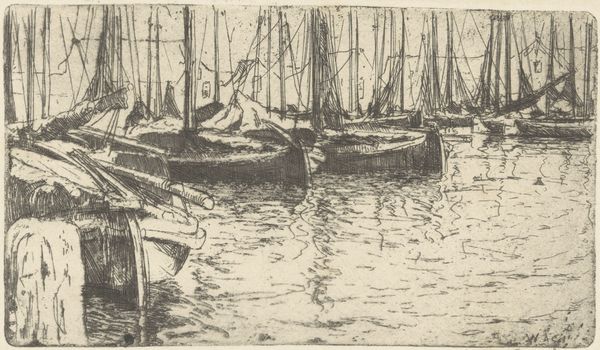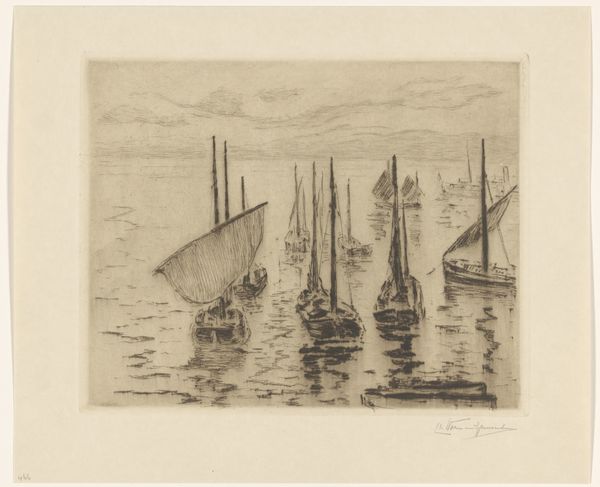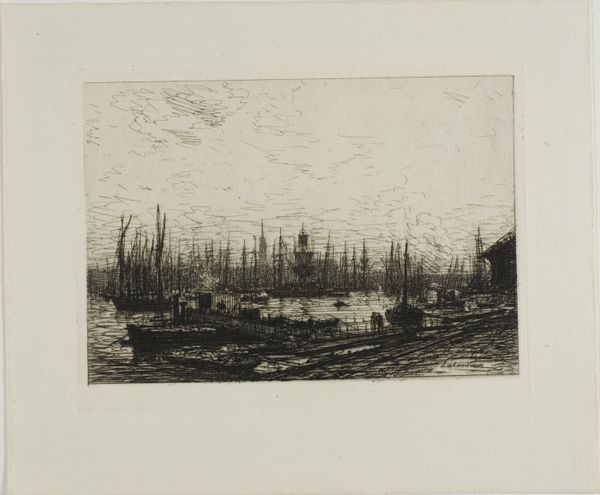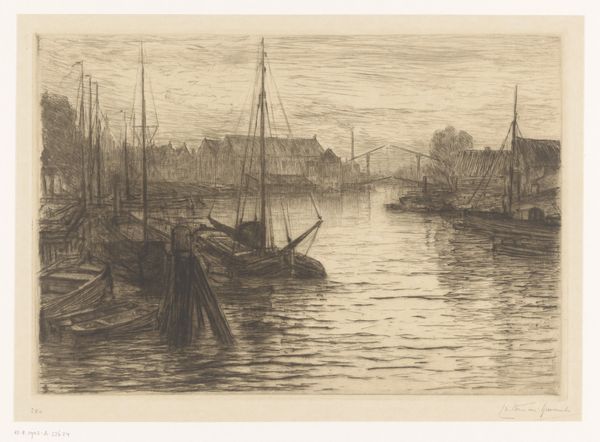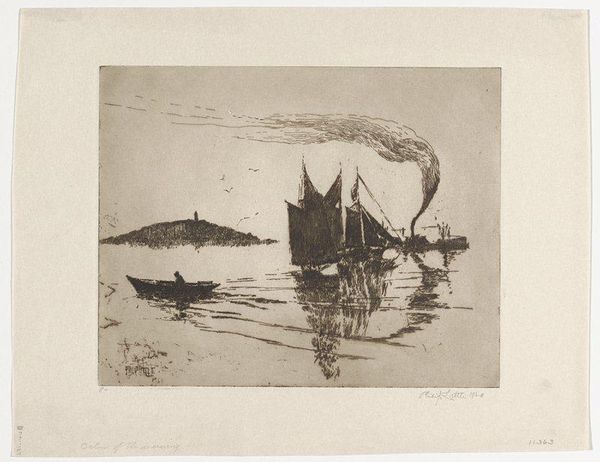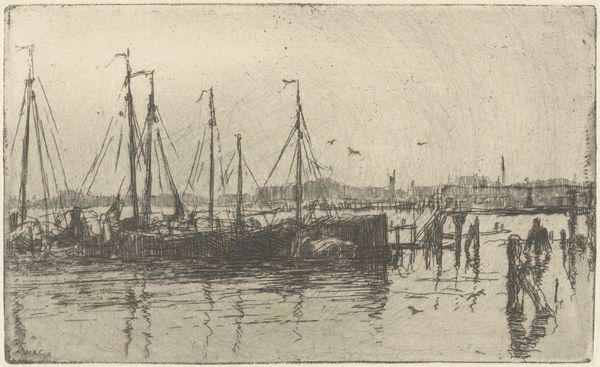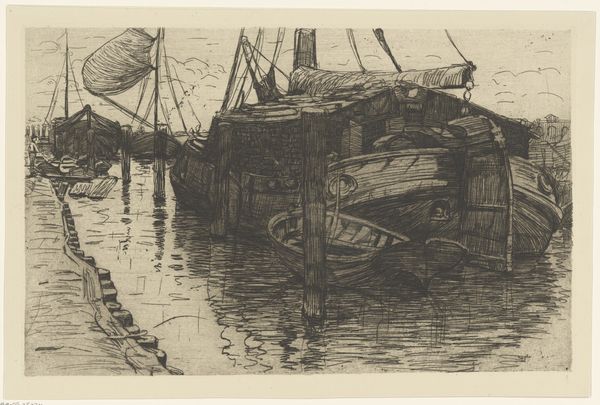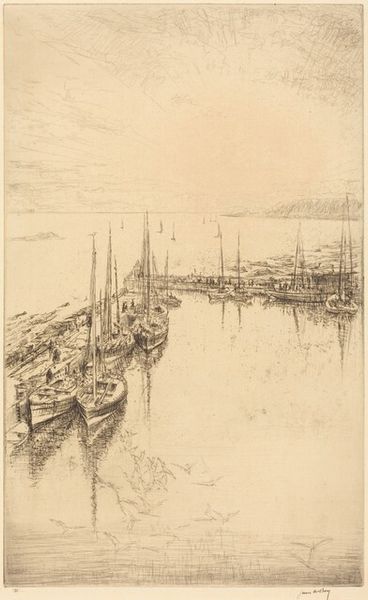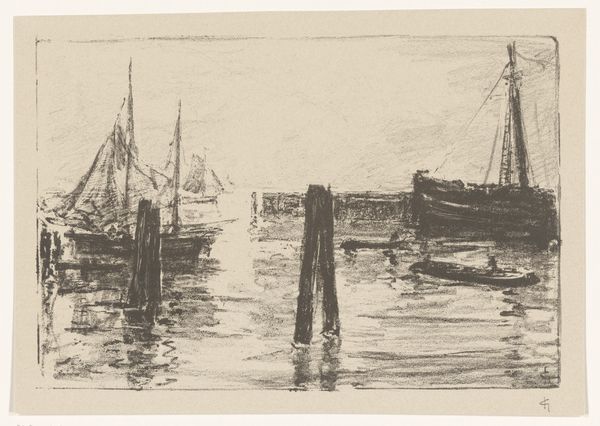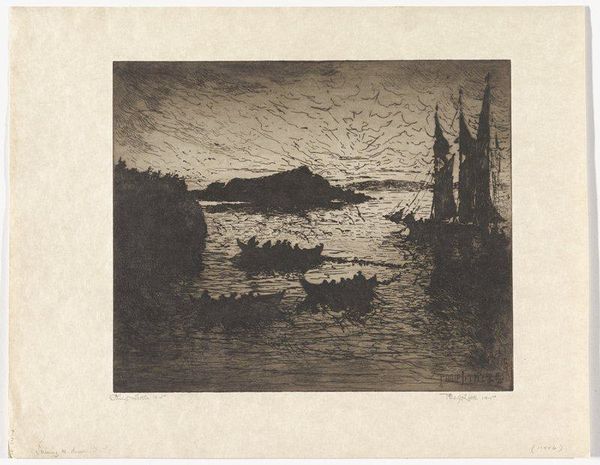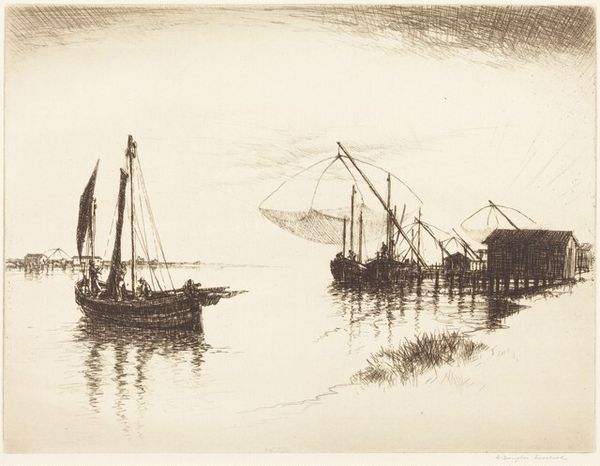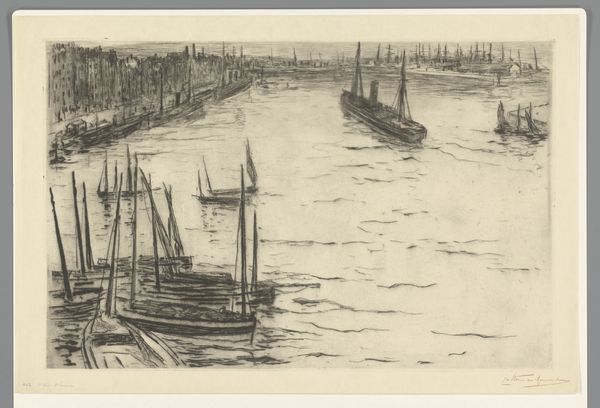
print, etching
# print
#
etching
#
landscape
#
etching
#
expressionism
Dimensions: plate: 33.4 × 45.4 cm (13 1/8 × 17 7/8 in.) sheet: 38.1 × 48.8 cm (15 × 19 3/16 in.)
Copyright: National Gallery of Art: CC0 1.0
Curator: The density of mark-making here is really striking. Editor: Yes, this is Otto Lange’s “Landscape VI” from 1913, made using etching. It feels incredibly dense and almost claustrophobic to me. All these lines, these boats… What do you see in this piece? Curator: For me, the magic resides in the *process* of its making. Lange chose etching – a medium born of industrial reproducibility – to depict what seems like a pre-industrial scene. Think about the labor involved, the biting of the plate with acid. He's deliberately embraced a technique that, on its surface, speaks to mass production, but he’s using it to portray a seemingly timeless landscape of boats in the harbor. Editor: That's fascinating! I hadn’t considered the tension between the etching process and the subject matter. The very *means* by which the artwork was created is so important. Curator: Exactly. And consider Expressionism at this time! There was angst among many German artists and writers concerning increased urbanization and the decline of traditional ways of life. Notice also how the harbor almost acts as a visual stand-in for a bustling manufacturing site. How might Lange have been implying this commentary about progress in relation to our perception of nature? Editor: It's less about romanticizing the landscape and more about acknowledging its place in a changing, industrialized world? Curator: Precisely. It’s a great reminder that even a landscape print has ties to material processes, social contexts and ultimately, production. Editor: This has changed how I view landscape art entirely. I am eager to think more critically about labor. Curator: Me too. Let's keep these concepts of production in mind moving forward!
Comments
No comments
Be the first to comment and join the conversation on the ultimate creative platform.
